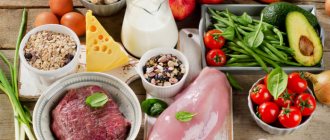© Shusha — depositphotos.com
Share:
When choosing a type of rice for preparing healthy meals, it is difficult to navigate correctly among the abundance of colorful packaging on store shelves. In the average supermarket there are about 5 species and more than 10 varieties of this cereal. To make the right choice, let's turn to the wise Asian centenarians. The basis of their diet for maintaining youth, health and slimness is brown rice (brown, cargo). Why? Let's figure it out
Composition and properties of brown rice
Rice has firmly entered the diet of not only the Asian countries from which it was imported. It has become the main cereal side dish in Europe and America. Rice is so popular among the world's population that it is included in the national cuisine of many countries (China, Japan, Thailand, Spain, etc.). It is used to prepare noodles, flatbreads, salads, risotto, porridge, pilaf, paella, pancakes, bread, pies, wine, etc.
Brown rice is the healthiest. It differs from regular white in the way it is pre-treated. During grain preparation, such grains lose only the outermost, inedible flower shell. The remaining layers of grain are fully preserved and have a nutty smell and taste.
The bulk of oils, vitamins (especially fat-soluble), cellulose and other biologically active beneficial substances are contained in the outer layers. Their number decreases towards the center of the grain. Starch and a minimal amount of microelements and vitamins remain in the internal endosperm.
© jehsomwang — depositphotos.com
White rice is obtained by grinding cargo down to the endosperm. In this case, all useful substances are cut off, including those located in the germ of the grain. Therefore, the composition of brown rice is richer than white rice.
Cargo* contains:
| Compound | Concentration | Units |
| The nutritional value | ||
| Squirrels | average content 7 – 9 | G |
| Fats | 1,7 – 2,0 | G |
| Carbohydrates | 76 | G |
| Dry grain calories** | 330 – 350 | kcal |
| Calorie content of the finished product** | 110 – 116 | kcal |
| Water | 11 – 13 | G |
| Alimentary fiber | 2,7 – 3,2 | G |
| Vitamins | ||
| IN 1 | 1,2 | mg |
| AT 2 | 0,09 | mg |
| AT 3 | 4,6 | mg |
| AT 5 | 1,5 | mg |
| AT 6 | 0,65 | mg |
| AT 9 | 22-27 | mcg |
| A | 1,4 | mg |
| E | 4,9 | mcg |
| RR | 78 | mg |
| Minerals | ||
| Potassium | 200 | mg |
| Phosphorus | 210 | mg |
| Magnesium | 90 | mg |
| Calcium | 12 | mg |
| Sodium | 7 | mg |
| Iron | 2,2 | mg |
| Manganese | 2 | mg |
| Zinc | 2,2 | mg |
*The concentration of substances in brown rice depends on its variety and region.
** When preparing an athlete’s diet, it is necessary to take into account that dry cereals differ in calorie content from cooked grains.
Brown rice contains all the beneficial substances of the outer edible shells, therefore it is 20-27% healthier than steamed rice.
The beneficial properties of brown rice are higher than those of white rice. Despite the fact that the amount of carbohydrates in cargo is high, it contains much more dietary fiber. The total amount of sugars in brown grains includes fiber in the upper layers (bran shell). The amount of dietary fiber reaches 14-16 g (per 100 g). Glycemic index (GI) of cargo is 45-50 units. At the same time, cargo does not cause a jump in blood glucose levels. The carbohydrates in brown rice are absorbed more slowly. They keep you feeling full for a longer period compared to white varieties.
The low GI of cargo is comparable to buckwheat. This allows brown rice to be used in athletes’ menus during the pre-competition period, without fear of adipose tissue buildup.
Calorie content and use in weight loss
The calorie content of brown rice depends on the cooking method:
- the raw product contains about 337 kcal per 100 grams;
- boiled - 110 kcal per 100 g;
- if butter is added to the finished dish, the calorie content increases by another 23 kcal.
If you are trying to lose weight, dark rice is the best product because it has a lower glycemic index than other varieties. The glycemic index (Gl) is determined for carbohydrate foods and shows the rate at which energy is released from food. The higher Gl, the faster carbohydrates are absorbed into the blood, causing fluctuations in sugar levels.
Brown rice grains help speed up metabolism due to their high protein content. The product contains manganese, which helps synthesize fat. One bowl of brown rice is considered an ideal side dish during weight loss. But you should not include only grain products in the menu: their abuse will not only not lead to the desired forms, but can also disrupt the functioning of the gastrointestinal tract.
How does brown rice affect the human body?
The effect of brown rice on the body depends on the frequency of its consumption. A single dose of rice porridge will not dramatically affect the athlete’s well-being. But by making this grain the basis of your diet, you will lay the foundation for a healthy diet.
Cargo has a positive effect on metabolism, the functioning of the digestive, vascular and nervous systems.
Brown rice:
- stimulates the transmission of nerve impulses. At the same time, sleep improves, stress resistance and attention increase, and depressive symptoms decrease. Its use is especially recommended for representatives of sports in which reaction speed is important (shooting at a moving target, tennis, etc.);
- stimulates blood circulation. Reduces blood cholesterol levels and thereby prevents the formation of atherosclerotic plaques. Leads to the enrichment of red blood cells with oxygen. This significantly improves the nutrition of peripheral tissues, unloading the heart muscle and leads to an increase in the athlete’s endurance (long-distance running, cycling marathons, etc.);
- normalizes the functioning of the gastrointestinal tract. On the one hand, brown rice massages the intestinal wall with fiber, increasing the strength and speed of food movement. On the other hand, it leads to the removal of undigested residues (toxins) on dietary fiber. At the same time, cargo does not increase stomach acidity;
- removes excess water from the body. This action is gentle, without leading to dehydration and diarrhea;
- keeps blood sugar levels at an acceptable level, without carbohydrate “suppositories”. Due to the mild increase in blood sugar levels, it is recommended for use in cases of carbohydrate metabolism disorders (metabolic syndrome, etc.). Suitable for nutrition for women with diabetes during pregnancy;
- promotes cell restoration. This effect leads to rejuvenation of the body, accelerating the recovery of athletes after injuries and surgical interventions;
- normalizes metabolism, accelerating it slightly. This is especially true for the nutrition of athletes watching their weight;
- softens the period of menopause;
- stimulates the immune system;
- supports the liver. This effect consists of three aspects: cleansing the liver of toxins, reducing the load on it and restoring hepatocytes with selenium included in the cargo.
© eskaylim — depositphotos.com
Interesting recipes
There are a large number of dishes that can be prepared with brown rice.
Recipe: Brown rice with mushrooms and frozen green peas.
Products needed: 100 g of brown rice, 400 g of peas, 250 fresh champignons, 1 onion, pepper, salt to taste, basil, cumin.
Cooking technology:
- Fry finely diced onion in a frying pan.
- Add the champignons, which should be chopped into slices.
- Salt, add pepper, cumin.
- Add washed rice and 1 glass of water. Cook with the lid closed.
- Thaw the peas, add to the rice and cook for another 3 minutes.
- Sprinkle in fresh basil.
Recipe "Rice with vegetables".
Products needed: 150 g of unpolished rice, 2 eggplants, 2 tomatoes, 1 onion, 1 clove of garlic, salt, pepper, parsley.
Cooking technology:
- Boil the rice.
- Cut the eggplants into small cubes, fry until tender, use a little vegetable oil.
- Add chopped onion and garlic, fry for 5 minutes.
- Chop the tomatoes, add to the rest of the ingredients, and simmer for about 10 minutes.
- Add rice, stir, add spices.
- Before serving, add chopped parsley.
Professional chefs recommend using brown rice to prepare first courses, for example, it is good in pickle soup and fish soup. This grain makes delicious porridges, pilafs, and side dishes.
You can watch the recipe for sesame rice in the video:
Brown rice is a healthy product from which you can prepare a large number of delicious dishes.
What are the benefits of brown rice?
The benefits of brown rice are due to its composition. Its consumption in food:
- nourishes the body. Rice provides the calories you need. It is recommended for dietary purposes. By following the consumption standards of this product, you will keep your weight within normal limits;
- supplies vitamins, in particular group B. By consuming this type of rice, you can avoid hypovitaminosis and the development of Beriberi disease;
- removes toxins from the body due to fiber. This promotes regular bowel movement;
- reduces the load on the cardiovascular system. Reduces the volume of circulating fluid, lowers cholesterol levels. All this rejuvenates the body, prolongs the life of the athlete;
- builds muscle tissue. The protein content of brown rice (7-9 g) is significantly lower than that of veal (20 g) and tuna (23 g). But in a comprehensive menu, these products complement each other and completely fill the daily protein requirement. When creating a menu for an athlete building muscle mass, brown rice will be high in protein with a low level of fat in the product;
- Gives a feeling of fullness for a long time. This allows you to stick to your chosen diet and eliminate unplanned snacks;
- normalizes metabolism. This heals the body and allows you to adhere to the developed training schedule all year round.
Beneficial properties for weight loss and weight maintenance
The value of brown rice is high in weight control. It is equally recommended for both weight loss and weight gain. To control body weight, you need to choose the correct intake regimen, quantity and additional ingredients for brown rice.
Recipes for cooking brown rice and various dishes made from it will help you create a balanced and healthy menu for weight loss. It is used by athletes at all stages of training activity.
Cargo is used for weight loss because it:
- Has low calorie content.
- Combines well with most products. The neutral taste of this cereal does not get boring even with long-term use.
- It is included in a huge number of dishes and makes the diet varied. Rice is used in first and second courses, appetizers, salads, baked goods and even drinks.
- It fills you well and keeps you feeling full for a long time. The rice diet is well tolerated and does not debilitate the athlete.
- Does not have an aggressive effect on the body.
- It has a balanced composition (BJU, vitamins, minerals).
Please note that brown rice is coarser than white rice. It must be cooked for a long time with preliminary soaking. Eating undercooked cereals leads to indigestion!
Brown rice types vary in shape. Each of them has different properties and is used for different dishes.
Compound
Essential amino acids and fiber, unsaturated fatty acids and vitamins A, C and B, potassium, zinc, iron, phosphorus, copper, manganese, calcium, sodium, magnesium and others, and in quantities greater than in white rice. The table shows comparisons of only a few components, but this is enough to see how cleaning, grinding and polishing deprive grains of nutritional value.
| Brown rice | Polished rice | |
| Cellulose | 1.8 g | 0.37 g |
| Folic acid | 10 mcg | 4.1 mcg |
| Vitamin E | 1.4 mcg | 0.4 mcg |
| Magnesium | 72.2 mg | 26.6 mg |
| Phosphorus | 142 mg | 57 mg |
| Potassium | 137 mg | 57 mg |
| Selenium | 26 mg | 19 mg |
| Zinc | 1.05 mg | 0.8 mg |
| Glycemic index | 50 | 70 |
Is there any harm from brown rice?
Rice has been used successfully as food for thousands of years. But it can also cause undesirable consequences.
Possible negative consequences:
- disruption of the gastrointestinal tract. Eating large amounts of rice with oil leads to diarrhea;
- exacerbation of diseases of the digestive tract. Rice shells are irritating to the intestinal wall. If the digestive system has inflammatory changes (even in remission), taking cargo can lead to an exacerbation of the disease;
- weight gain. This is a consequence of overeating, especially with a decrease in physical activity against the background of the usual diet;
- allergic reactions. They are rare and are mainly provoked not by the rice itself, but by the substances with which it is processed to increase shelf life;
- poisoning - they are provoked by long-term improper storage of brown rice dishes.
The benefits and harms of unpolished and polished rice (white)
In comparison, any information is easier to perceive and, considering the properties of two types of rice in parallel, it is easier to understand how industrial processing changes the properties of products. Similar properties include:
- the ability to remove excess salts and liquids;
- rapid saturation of the body with energy due to the high content of carbohydrates in the composition;
- the absence of gluten, which allows the inclusion of cereals in the diet of patients with celiac disease.
In the production of white rice, the bran and germ are ground from the grain, from which rice oil is subsequently produced, and oil production waste is used in the manufacture of animal feed. On grains of brown rice, the bran and germ remain intact and all their components are retained in the grain. These are, first of all, fatty acids:
- oleic (32-38% composition);
- linoleic (32-47%);
- linolenic (1%);
- palmitic, stearic and others.
Should you only eat brown rice and why?
Although brown rice is healthier than white and steamed rice, its long-term consumption is not recommended by nutritionists.
This is due to several reasons:
- Intense effect on the walls of the digestive tract.
- Insufficient intake of essential amino acids into the body.
- A small amount (compared to the daily norm) of vitamins and minerals.
It is recommended to include brown rice in diets about 2-3 times a week. This frequency of use leads to a lasting positive effect of taking the product and does not cause negative consequences.
Brown rice diet, menu
Reducing weight by an average of 3 kg is quite simple. To do this, you need to cook brown rice as a side dish. The main dish of the proposed diet is considered to be brown rice; it is combined with salads, mushrooms, and fruits. Here is a diet option that lasts 7 days.
Monday:
Possible contraindications for use
Rice is one of the safest foods. It is gluten-free and recommended for people with ciliacia. Cargo has a low GI and is not prohibited for diabetics. However, it also has limitations. From the list of side effects of the product comes a list of contraindications for its use.
These include:
- individual intolerance;
- inflammatory diseases of the gastrointestinal tract;
- dehydration.
In other cases, adding rice to your diet will not cause harm.
Recipes for healthy eating
Crushed jacket potatoes with herbs
- 2 g Protein
- 0.4 g Fat
- 18.1 g Carbohydrates
- 79.8 kcal
40-45 minutes
- #dietary
- #baking
- #green onions
- #potato
- #low calorie
- #dinner
- #olive oil
- #sour cream
- #dinner
Other recipes
Cooking methods
Professional chefs say that you can cook the same dishes from brown rice as from white rice. It should be remembered that the cooking time in this case will double. To speed up the process, they resort to pre-soaking the product; it is best to do this overnight.
If you need to prepare fluffy rice, you should adhere to the following technology:
- Cleaning and rinsing stage. Remove all foreign elements. Rinse in cold water. Pour boiling water over it, then rinse the words with cold water.
- The soaking stage should last at least 5-6 hours; it is better to leave the rice overnight. Pour the product with plenty of cold water.
- Rice cooking stage. For brown rice, you should adhere to the following proportion: for 1 part of cereal, take 2.5-3 parts of water. For 1 cup of rice you will need 1 teaspoon of salt. Pour cold water over the rice, add salt, bring to a boil, and cook for 10 minutes over high heat. A prerequisite is that the container must be closed. Then reduce the heat on the stove and continue cooking for another half hour.
- The stage of bringing to readiness. Turn off the stove and leave it on for another 15 minutes. The container must remain closed.
This rice is great as a side dish.
Experts believe that brown rice should not be used for porridges prepared with milk. It is recommended to make fillings for all kinds of confectionery products from white rice, and brown rice is best suited as a side dish.
Harmful effects
Brown rice with its unique composition of microelements attracts special attention from nutritionists.
The harm and benefits of cereal are still the subject of eternal debate: even the safest product can cause harm to the body.
Often foreign cereal producers use talc and synthetic vitamins during processing so that the product does not lose its properties and qualities. However, the effect of these substances on the human body can be dangerous, so you should opt for domestic manufacturers.
How to cook properly?
After purchasing brown rice and opening the package, it is better to place the container with a lid - ceramic or tin - in the refrigerator. You can't store cereal for long, because the grain shell oxidizes, otherwise the beneficial properties will be lost and there will be a risk of poisoning.
Opponents of the rice diet do not consider brown rice a healthy and dietary product: the grain has a high calorie content, therefore it is contraindicated to eat it.
In addition, improper preparation of cereal leads to moisture being drawn out of the body, which can lead to severe constipation.
The benefits and harms of other products presented on our website: blueberries, green buckwheat, blackberries, sprouted wheat and others.
Scientific research on the properties of the product
Research on this product began at the end of the 19th century in Holland. Physician and chemist Christian Eijkman studied beriberi disease in Asian countries. Currently, this disease is called vitamin deficiency with deficiency of component B1. After an expedition to Indonesia, it turned out that the population mainly consumed refined rice (polished). The doctor decided to conduct an experiment and began feeding the patients boiled brown rice. The calorie content of this product fully satisfied all the energy needs of residents, and therefore there were no problems with replacement. After a while, the disease began to go away, and Christian found out that processing grains negatively affected its nutritional value. Almost all useful components are lost from rice, and these are vitamins, fiber and oils.
This theory is confirmed by more recent research by scientists from Harvard. The mass study included 200 thousand people. It turned out that white rice can contribute to the development of diabetes. Especially if you consume more than 750 grams (5 full servings) per week. But those who replaced the harmful grain with brown rice are much less susceptible to this disease. The risk of diabetes is reduced by 11%, and if you consume a completely unrefined product, then by 30%.
How to Include Brown Rice in Your Diet
One of the best things about brown rice is its versatility. You can consume it at any time of the day and include it in various recipes.
Here are some ways to include brown rice in your diet:
- Eat brown rice porridge for lunch with vegetables and protein foods.
- Add eggs, salsa, avocado and black beans to brown rice for breakfast.
- Replace oatmeal with rice porridge for breakfast.
- Add brown rice to soups instead of pasta.
- Use it with fresh vegetables and olive oil for a delicious side dish.
- Use it to make energy bars.
- Use brown rice instead of white rice to make a healthier version of rice pudding.
- Use it instead of white to make sushi rolls.
- Use it in curry recipes.
- Try making risotto using brown rice instead of arborio rice.
- Replace pasta with brown rice.
As you can see, there are many ways to eat brown rice. This nutritious whole grain pairs well with many ingredients and can be served for breakfast, lunch or dinner.
Summary:
Brown rice is a flexible ingredient that can be used in a variety of recipes and dishes. You can also use it as a healthy replacement for white rice or pasta.











